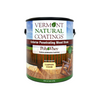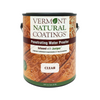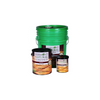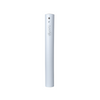
Guide to Chemical Free Cleaning
I have had the opportunity to carry out about 3,000 indoor environmental home inspections over the years. I have been called in for various concerns and problems, including water damage and mold issues. One element within the home that often surprises people is the toxicity and amount of chemicals we have around us—chemicals that we have purchased and purposely brought into our homes in the hopes of creating healthier spaces. These chemicals, primarily cleaners, can have the most significant negative impact on our indoor air quality and your family’s health and well-being.
Table of Contents
- Why Do Cleaning Products Contain Chemicals?
- Are Chemical Based Cleaning Products Safe?
- How Are Cleaning Products Allowed to Contain Chemicals?
- Are the Fragrances Added to Cleaning Agents Harmful?
- Where Do You Store Cleaning Products?
- How Do You Know if a Cleaning Product Is Safe?
- How Do You Find Safe Cleaning Products
- Bottom Line
Why Do Cleaning Products Contain Chemicals?
After World War II ended, chemical factories stopped making weapons and started making home cleaning and personal care products. The push for these products into the marketplace was part of the economic stimulus called consumerism. Companies pushed to make homes cleaner, shinier, and smelling like a garden meadow with a heavy reliance on petroleum-based chemistry. When we think of the 1950s, we think of June Cleaver of Leave it to Beaver in her high heels, pearl necklace, and spotless home. This, the space-age home of the future, was what everyone desired, and it was attainable through the science of chemistry. Unfortunately, human health was not within the scope of priorities during the creation of these chemicals. This approach has been the legacy of the modern cleaning and personal care industries today.

Related Products
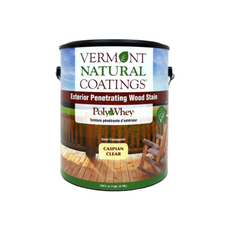
Vermont Natural Coatings PolyWhey Exterior Penetrating Wood Stain
Vermont Natural Coatings
In Stock
14 Colors

Vermont Natural Coatings Penetrating Water Proofer Infused With Juniper
Vermont Natural Coatings
In Stock
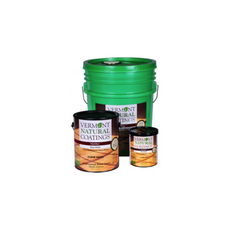
Vermont Natural Coatings PolyWhey Floor Finish
Vermont Natural Coatings
In Stock
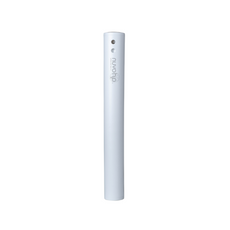
NuvoH2O Home Softener Replacement Cartridge
NuvoH2O
In Stock
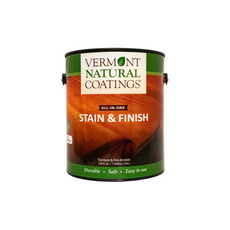
Vermont Natural Coatings All-in-One Stain & Finish
Vermont Natural Coatings
In Stock
16 Colors
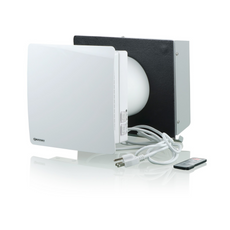
Vents TwinFresh Comfo RA1-50-2 Ductless Energy Recovery Ventilator
Vents
In Stock

AFM Safecoat Transitional Primer
AFM Safecoat
In Stock
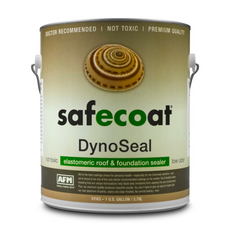
AFM Safecoat Dynoseal Roof and Foundation Sealer
AFM Safecoat
In Stock
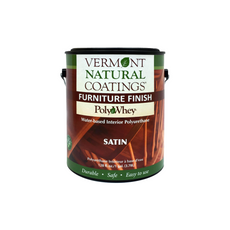
Vermont Natural Coatings PolyWhey Furniture Finish
Vermont Natural Coatings
In Stock
3 Colors
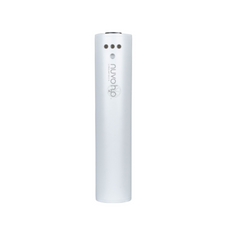
NuvoH2O Manor Water Softener System Replacement Cartridge
NuvoH2O
In Stock
Are Chemical Based Cleaning Products Safe?
Most cleaning products today stem from the petroleum-based (organic) chemistry of post-war. The rapid explosion of organic chemistry at the time created thousands of products that are part of our everyday lives today, from plastic storage containers to formaldehyde in many of our household products to flame retardants in baby’s clothes, to toxins in our cleaners and personal care products. Toxins can range from neurotoxins (affecting our nervous systems), reproductive toxins (affecting our reproductive systems, primarily females), respiratory irritants, endocrine, and hormone disruptors, carcinogens (causing cancer), mutagens (causing mutations in our cells), and teratogens (causing congenital disabilities). These are serious concerns within our homes and not something that we would knowingly bring to our family. Yet we unwittingly have because the smiling happy people on the ads are selling a feeling, an experience of clean freedom with no effort, and we want that content, blissful experience. The truth about the health effects of these chemicals has unfortunately been hidden from the general public. The good news is that we can educate ourselves and control what we bring into our homes.
How Are Cleaning Products Allowed to Contain Chemicals?
US laws prevent any person in a corporation from being liable for the products they sell. The second primary reason is that manufacturers can call ingredients “proprietary” and not list them in Safety Data Sheets. Safety Data Sheets are required by international law to list the ingredients and are generally created for worker safety if exposed due to spills or overexposure. Safety Data Sheets are required for all products manufactured. But a product to stand out from its competitors has to keep some ingredients a secret (think Coke and Pepsi). Manufacturers can legally hide the more toxic chemicals within their “proprietary secrets” instead of declaring them. If they mention chemicals, they may conceal their actual name behind their CAS (Chemical Abstract Services) number. For example, instead of listing formaldehyde, they may write it as CAS#50-00-0, giving you no information.
If you do wish to know, you have to dig further. The same Safety Data Sheets are supposed to be available to people purchasing the products. They are often on manufacturers’ websites, but it can be challenging to locate them. You must search specifically and clearly for the safety data sheet for the product in hopes that it comes up. These issues leave little comfort for workers or end-users of the products. At the bare minimum, chemicals should be listed on the packaging.

Are the Fragrances Added to Cleaning Agents Harmful?
It's important to understand that clean does not smell. Added fragrances are a gimmick: there are no spring meadows trapped inside that spray bottle you have. Air fresheners, plug-ins, etc., can include over 100 volatile organic compounds (VOCs). These are unstable petroleum-based products that you can smell, coating your nasal passage and sinus cavities with oily films, then doing the actual damage to your body. While scent-free does not automatically mean healthy, it is a significant first step for most busy homeowners. Smelly gym bag? Wash it out, or air it outside. Smelly bathroom? Run the bathroom fan. Smelly wet dog? Towel the dog down before letting her in the house. Smelly teenager’s room? Open a window and air it out.
Where Do You Store Cleaning Products?
Where do you store all of your cleaning products? Under the kitchen and bathroom sinks? Where do you store your potatoes? Also, under the kitchen sink? These do not go together. Try to keep your cleaning products separate from your food. If you have food in your pantry or cupboard, do not keep cleaning products in there. This will make a big difference as some foods are absorptive—meaning they can take in some of these chemicals—which is not ideal.
How Do You Know if a Cleaning Product Is Safe?
Ingredients are often located on the back of the bottle. Are the ingredients listed? If not, consider a different option. If they are, can you translate them? A good rule of thumb is that it is probably bad for you if it has more than seven syllables, numbers, and letters. If it has an EPA number, then it is classified as a pesticide, so be cautious. If you cannot pronounce it, steer clear of it.

How Do You Find Safe Cleaning Products
Most supermarkets have a green aisle which is a great place to start when looking for chemical-free cleaners. You can also look for labels like the EPA’s Safer Choice or the Green Seal logo. Read a few of the same kinds of products to understand the ingredients, check the price points, and see what you can afford. Ideally, you can replace the product-for-product within your home and carry on without any significant disruption.

The Environmental Working Group (EWG) is an incredible resource for families to make healthier choices. EWG is a non-profit that researches healthy solutions for you, your family, and your home. The website is worth your time, from pesticides in produce to sunscreen, drinking water, cosmetics, and more. They even have a fantastic app for your phone called EWG’s Healthy Living App, with over 120,000 products listed in the database. You can scan the barcode of a product, learn more about it, and see healthier options immediately. This resource can help take the guesswork out of choosing from an overwhelming number of options. Knowing you are making healthier decisions for your family with solid science is reassuring to everyone.
Make Your Own Cleaner
Some healthier cleaning products are more expensive than the generic chemical-based cleaners you have been using. So how can you save money, the planet, and your family’s health? Make your own. Baking soda, vinegar, lemon juice, and essential oils have been used for hundreds of years and work effectively in our modern homes to clean any surface. You can find some recipes on my website, as well as numerous other sites. The best part of this is it is something you can do with the whole family, making cleaning products (and even personal care products) that are safe and effective—and they will save you money as well.
- Baking Soda: This common baking ingredient can kill viruses lurking around your home and is excellent at cutting through grease in your kitchen. It is also a deodorizer to help you get rid of that “stuffy” winter smell.
- Vinegar: Vinegar is an excellent natural de-greasing product. Because of its natural acidity, it will cut through even the thickest grease stains in your oven without relying on dangerous chemicals.
- Lemon Juice. Lemon juice is excellent for polishing and shining hard surfaces (think kitchen counters and bathroom sinks). It also leaves a fresh, natural fragrance that doesn’t depend on phthalate-infused fragrances. Combining lemon juice with a few olive works well as a natural polish recipe.
If you are looking for an all-purpose cleaner you can purchase for your spring cleaning needs; several brands offer healthier choices:
ECOS All-Purpose Cleaner
ECOS offers a plant-derived cleaner that can be used on sealed stone, hardwood floors, painted surfaces, linoleum, vinyl, porcelain, chrome, stainless steel, wood, and other surfaces. Besides not relying on heavy chemicals, this company is also committed to environmentally friendly manufacturing methods as their facilities run on 100% renewable energy.
Biokleen All-Purpose Cleaner Concentrate
Biokleen products are free of phosphates, chlorine, ammonia, petroleum solvents, alcohol, butyl, glycol ether, brighteners, artificial colors, artificial fragrance. And because it is concentrated, each bottle goes a lot further and has a lower ecological footprint.
Ecover All-Purpose Cleaner
Ecover All-Purpose Cleaner is a concentrated cleaner made with only plant-based, non-toxic ingredients.
Bottom Line
By removing the toxic cleaning products from your home, you reduce your chemical exposure dramatically and improve the overall indoor air quality of your home. This creates more significant health opportunities for you and your family and can make your home cleaner in the end!
Disclaimer: This article does not constitute a product endorsement however Rise does reserve the right to recommend relevant products based on the articles content to provide a more comprehensive experience for the reader.Last Modified: 2022-01-19T02:45:21+0000Article by:
Stephen Collette
Stephen Collette is a Building Biologist, Building Science Consultant, LEED Accredited Professional, and a Heritage Professional. Stephen is the owner of Your Healthy House and lives in Lakefield, ON with his wife and 2 daughters.
